
It’s been nearly four weeks since I farewelled my friends and left Armidale, which somehow seems both very recent and very distant. Before I left, I’d planned to post some of my favourite photos of the town, but in the press of events didn’t manage to. And after, I found it difficult to decide which in fact were my favourites! But here are some that I like.

Armidale, in the Northern Tablelands of New South Wales, is a modestly-sized town of about 23,000 people. It was settled by Europeans in the 1830s (who named it after Armadale — a conveniently unique misspelling for googling); it expanded steadily thereafter. Gold was discovered nearby in the 1840s and from 1888 was on the rail route from Sydney to Brisbane. This is the Imperial Hotel, built in 1889.
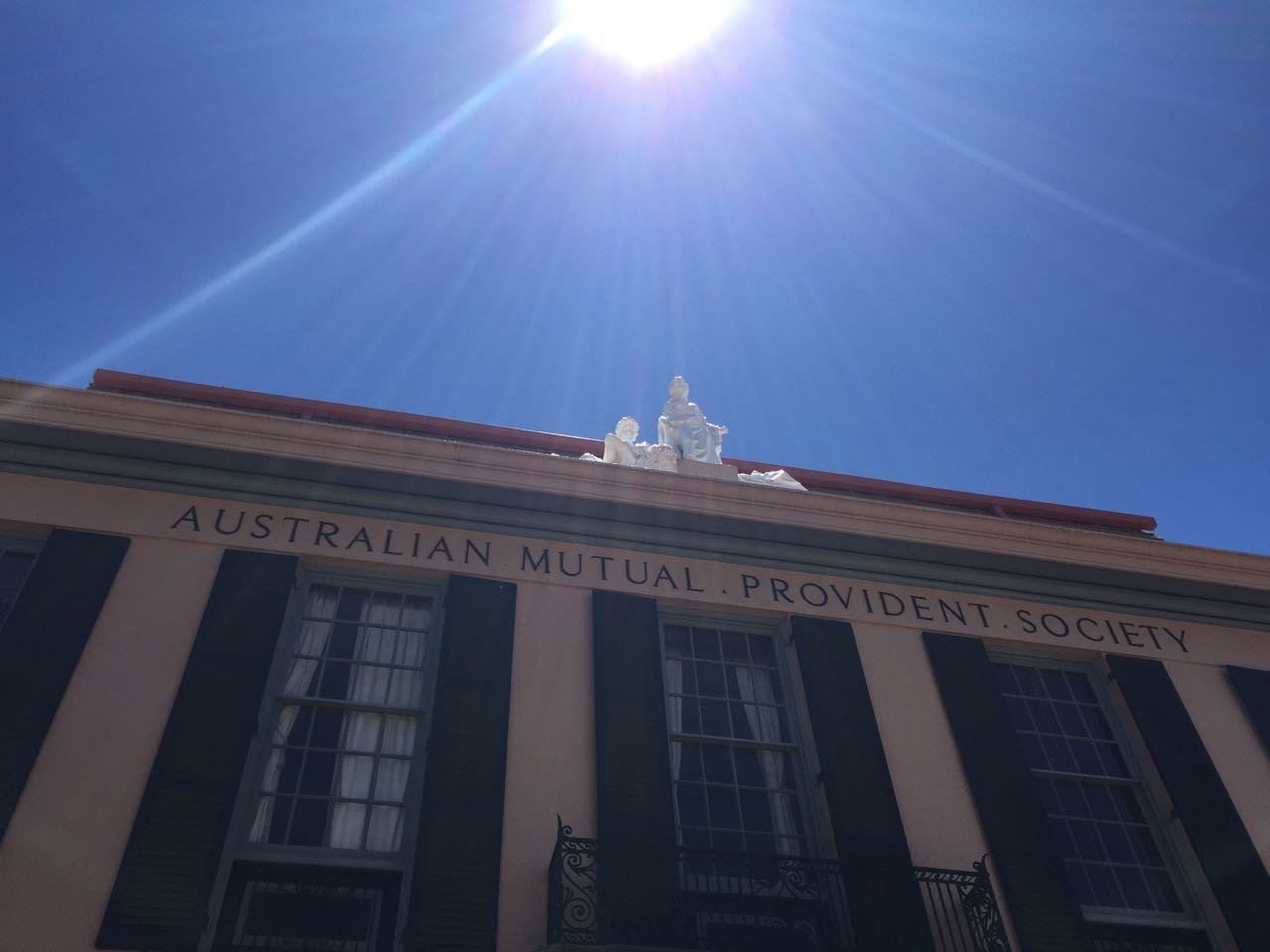
There are also a striking number of handsome survivals from the interwar period. This one, the AMP Building, is from 1929.

This is one of my favourites, Tattersall’s Hotel, which dates from 1880 but was given the full Art Deco treatment in 1939. Unfortunately the interior always seems to be under refurbishment, so I never got to see inside.

The Anaiwan people are the traditional owners of the land on which Armidale sits. Their sovereignty has never been ceded.

There’s a reminder of this at the heart of the University of New England (UNE), where I taught. Booloominbah is where the vice-chancellor’s office is; there’s a nice restaurant inside; graduations are held on the lawns outside. It’s a remarkable building, one of the largest private houses built in Australia in the 19th century, possibly even the largest. Depending on who you ask, it’s Arts and Crafts, Gothic Revival or Queen Anne in style; which is to say it’s a mixture, but I think it works.
Booloominbah was built on a hill overlooking Armidale by a wealthy pastoralist family, the Whites. One of its most striking features is a huge stained-glass window featuring scenes from the life of General Gordon — Gordon of Khartoum — who was killed in an imperial misadventure three years before the house was completed in 1888. But of course, Booloominbah was itself a result of colonial conquest. The meaning of the name is unclear, but it’s presumably Anaiwan, a language now largely lost. Possibly it’s a reference to the hill on which UNE now stands, possibly ‘Home of the native apple trees’. Either way, it was a name taken originally in dispossession, but which now represents survival.
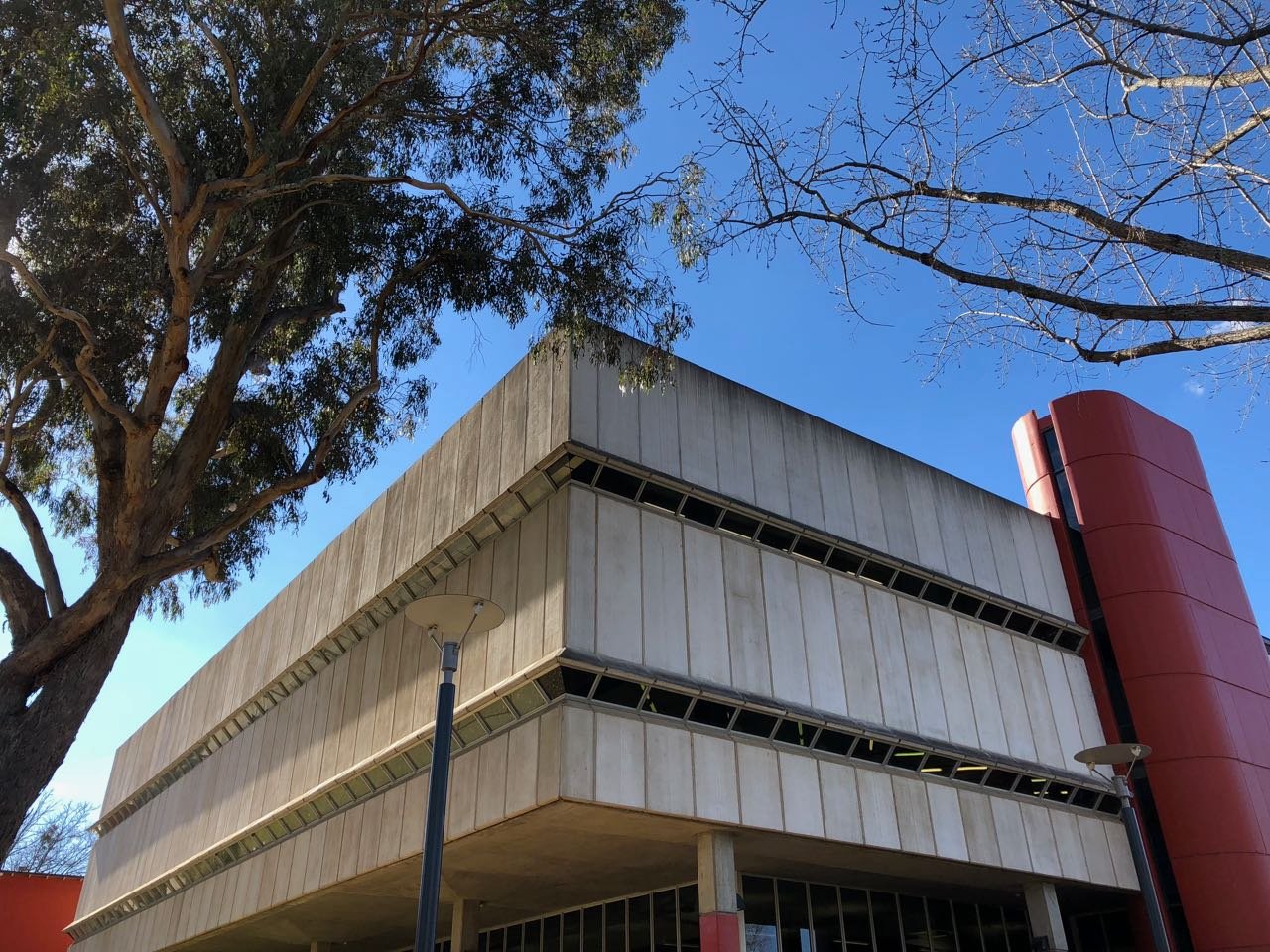
Booloominbah was donated to the state of New South Wales (in some machination that I don’t quite understand, as part of the separatist New England New State Movement) and in 1938 became the home of the New England University College, affiliated with the University of Sydney. NEUC (an acronym which I may have just invented) became UNE in 1954, the first Australian university outside of a capital city. Eventually Booloominbah became surrounded by new buildings, mostly in the standard 1960s/1970s university style. The Dixson Library is a particularly lovely example.

Possibly even more Brutalist is the Boiler House, built in three stages over the decade from 1961. It’s been dormant since 2000, but it’s being turned into a children’s ‘Discovery Space’ (think science and technology, but hopefully not only that), which I think is a brilliant use of an otherwise awkward industrial remnant.

The photos I’ve chosen don’t really show this, but UNE is a very green campus. It’s surrounded by parks, farms, and even some bush. There’s wildlife, too: kangaroos are not uncommon visitors (hazardous ones, too, if they jump in front of the bus when it’s belting down the hill), koalas can sometimes be seen perched in the gum trees (not this one, though), and it’s always an exciting day when the ‘WARNING – SNAKES HAVE BEEN SEEN IN THIS AREA’ sign is up in front of Dixson. As a regional university, agicultural science is one of UNE’s core strengths; I don’t think I actually saw any sheep on campus, but I certainly sometimes heard them from my office!

Armidale is in fact better known for its deciduous trees than its eucalypts. Somewhat unusually for an Australian town, it’s a very colourful place in autumn.

One of my favourite trees, around the corner from my old house.

But winter was probably my favourite Armidale season — not least when the morning fog made a walk in the park look like the ending of Threads.

Due to its elevation — about 980m — Armidale has a cool climate. Winter is very cold in Australian terms: overnight temperatures will routinely get down to 0°C or below. I think the lowest while I was there was about -8°C, with a couple of brief snowfalls here and there, but two weeks after I left town it reached -10°C! Timing is everything, as they say.

One thing Armidale doesn’t have is a river. The closest it comes is Dumaresq Creek.

Though it does temporarily get bigger when it floods!
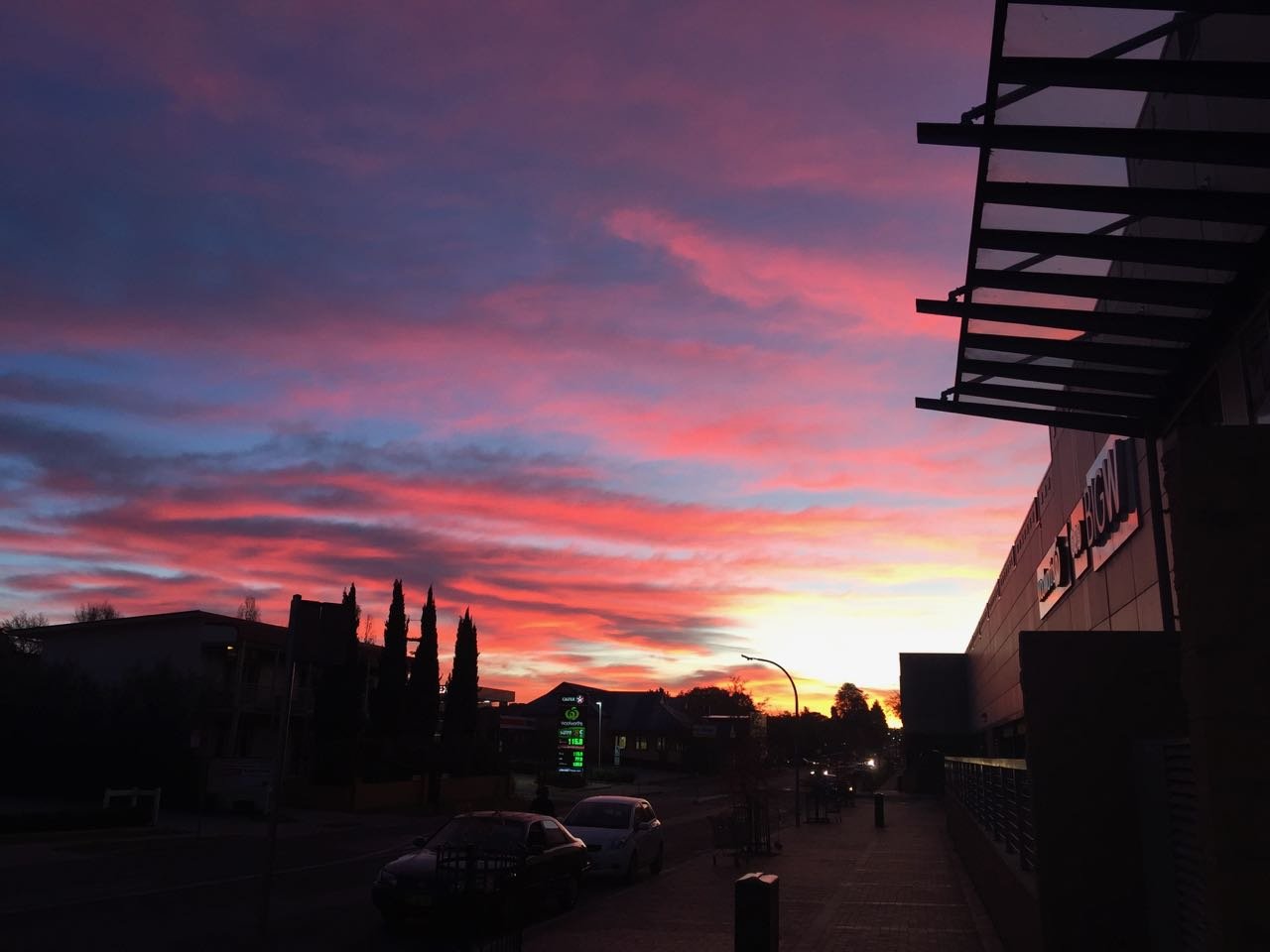
I’ll miss the Armidale skies, especially the sunsets.
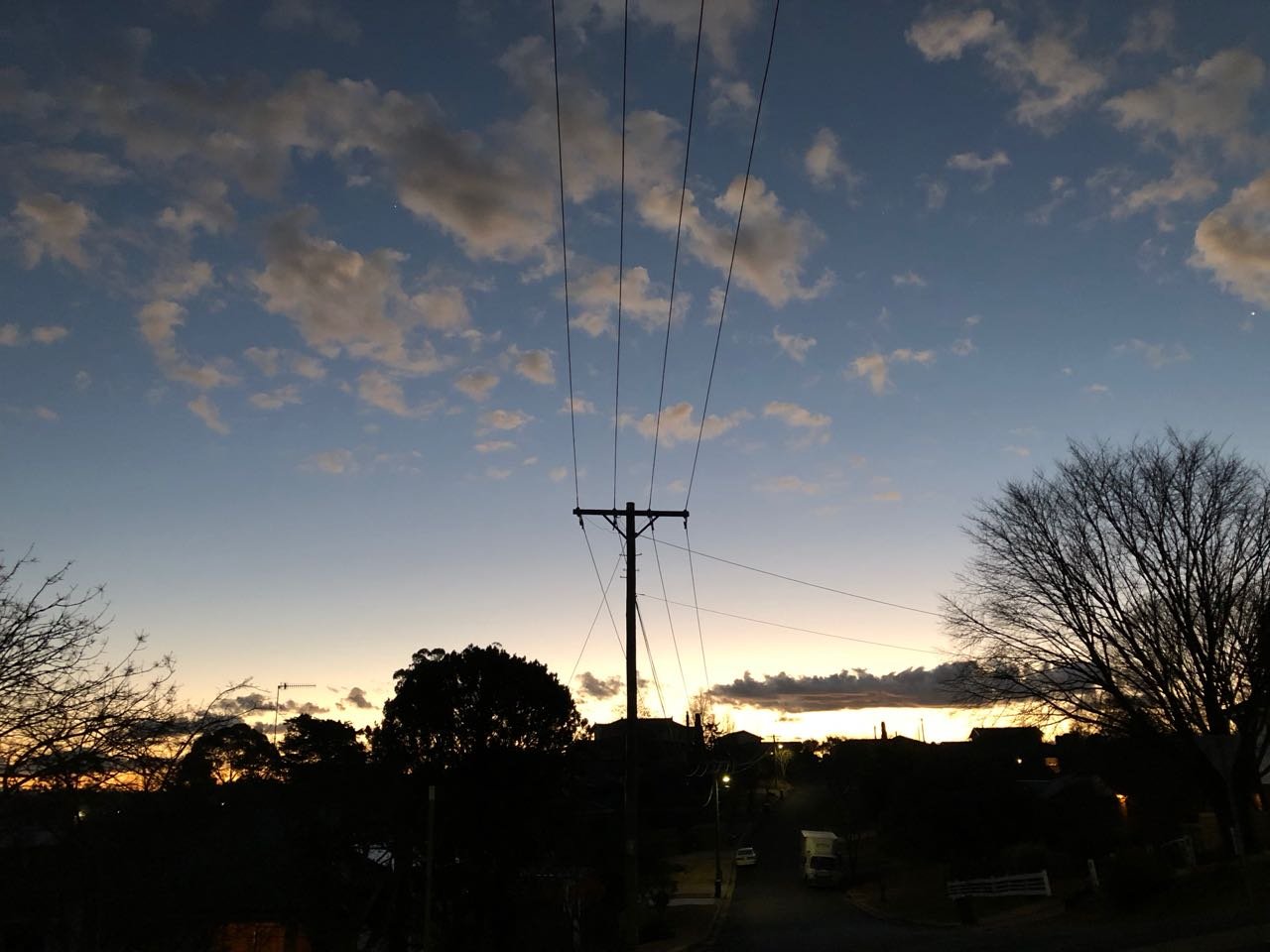
Nothing you can’t see anywhere else, of course.

But it was usually beautifully clear and still.
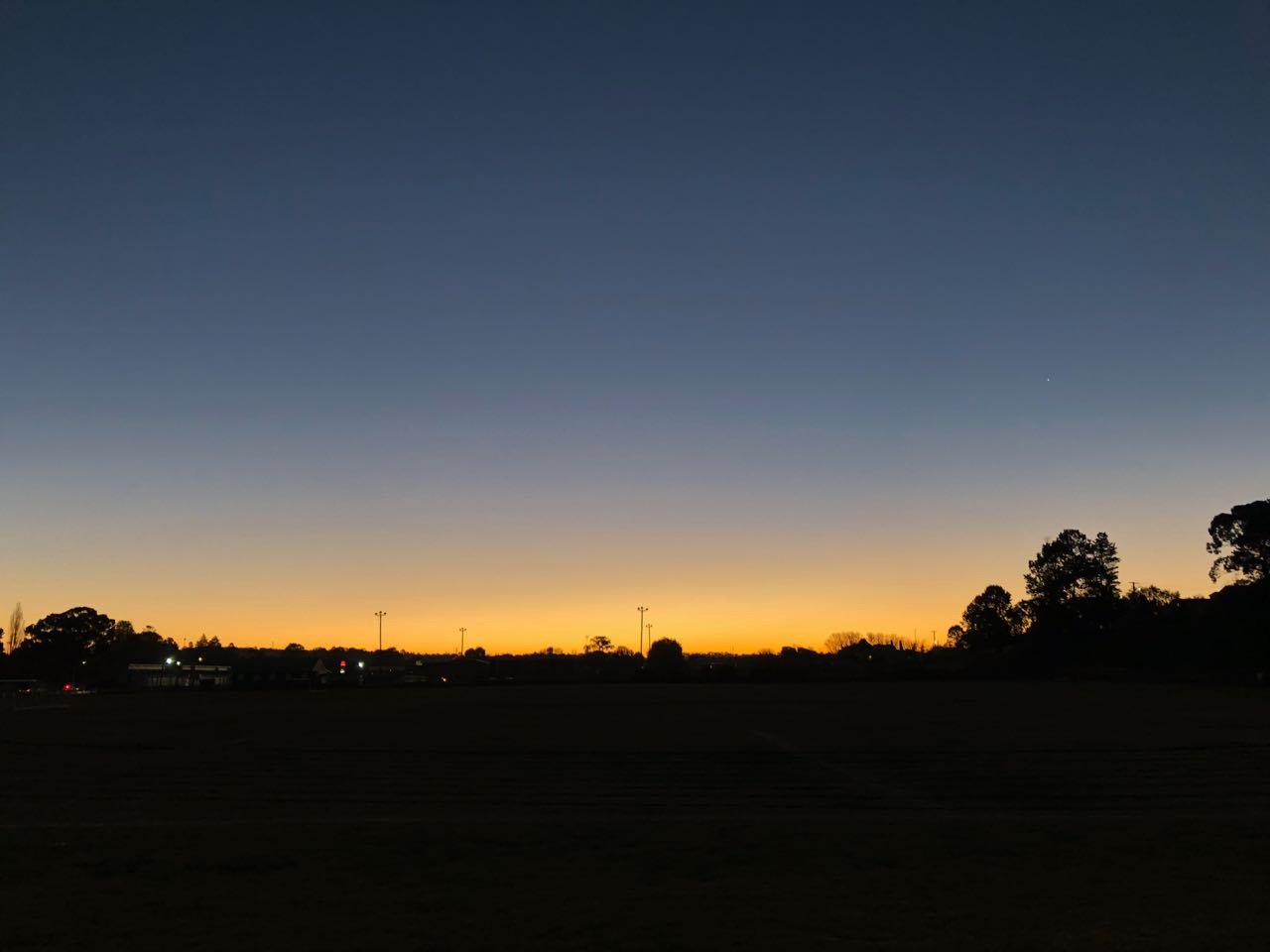
And a peaceful way to end the day.

Finally, and appropriately, a view from Armidale, rather than of it; looking out, or rather up. Upwards, and onwards…
![]() This work is licensed under a Creative Commons Attribution-NonCommercial-NoDerivatives 4.0 International License.
Permissions beyond the scope of this license may be available at http://airminded.org/copyright/.
This work is licensed under a Creative Commons Attribution-NonCommercial-NoDerivatives 4.0 International License.
Permissions beyond the scope of this license may be available at http://airminded.org/copyright/.


I enjoyed the tour round one of my favourite cities, indeed, one of my old stomping grounds. Thank you.
Nice shots.
Thanks!